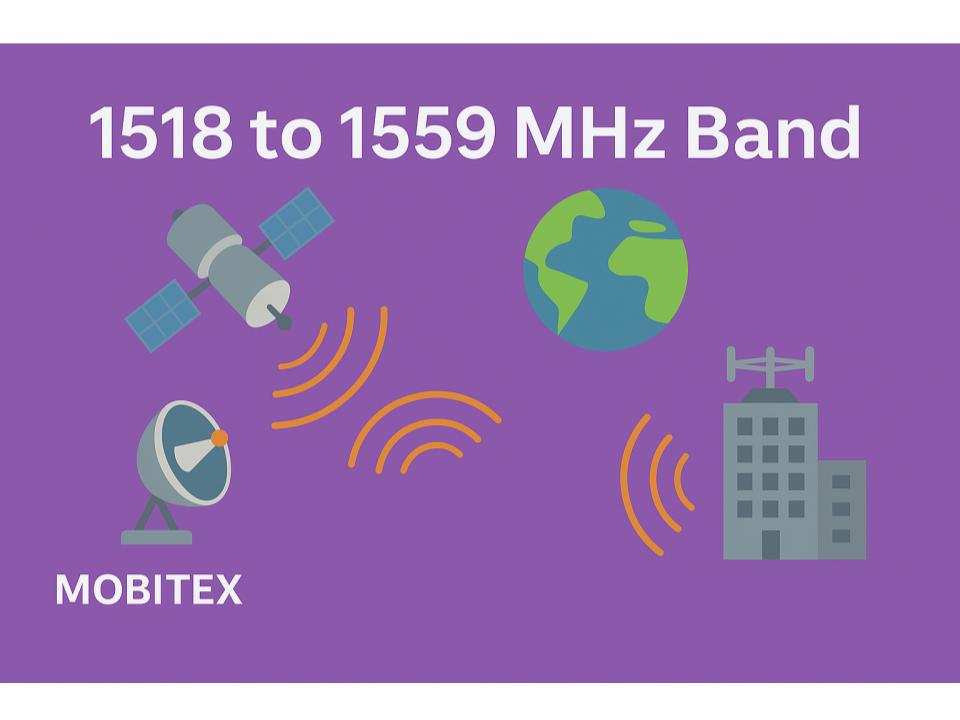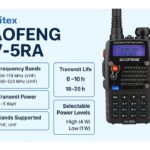🌍 The 1518–1559 MHz range represents one of the most critical segments of the L-band, enabling global satellite communications, safety services, and navigation coexistence. This spectrum bridges the gap between terrestrial broadband systems and space-based connectivity, supporting aircraft, ships, and IoT devices operating far from cellular coverage.
📡 Core Applications
Mobile-Satellite Service (MSS) Downlink
Most of this band is allocated globally to the Mobile-Satellite Service (MSS) for downlink operations (space-to-Earth). It serves satellite constellations providing voice, data, and tracking coverage worldwide. These systems connect:
- Satellite phones (e.g., Iridium, Inmarsat terminals)
- Maritime and aviation communication systems
- Remote IoT and asset tracking networks
MSS downlinks in this range deliver reliable coverage to portable and fixed receivers, even in extreme environments.

Aeronautical and Maritime Safety
Many aviation and maritime systems use portions of this band for distress, safety, and control communications. The link reliability and global reach make it vital for emergency connectivity and flight operations.
IoT and Machine-to-Machine (M2M) Connectivity
Emerging narrowband satellite IoT platforms operate here, extending coverage for remote sensing, logistics, and industrial telemetry applications where terrestrial networks don’t reach.
🌐 Regional Allocations and Regulations
| ITU Region | Allocation Summary |
|---|---|
| Region 1 (Europe, Africa) | 1525–1559 MHz assigned to MSS downlink, with protection for GNSS above 1559 MHz. |
| Region 2 (Americas) | 1525–1559 MHz licensed to MSS operators; used by Inmarsat and Ligado systems. |
| Region 3 (Asia-Pacific) | Harmonized MSS downlink band; coordination with RNSS/GNSS protection required. |
Each region follows ITU-R coordination frameworks to ensure MSS satellites coexist with adjacent systems such as RNSS and terrestrial SDL (Supplemental Downlink) below 1525 MHz.
⚙️ Technical Characteristics
| Parameter | Typical Value / Notes |
|---|---|
| Propagation Model | Free-space dominant (FSPL ≈ 32.44 + 20 log₁₀ f + 20 log₁₀ d) |
| FSPL @ 1 km | ~96 dB |
| Fresnel Radius @ 1 km | ≈ 7 m |
| Bandwidth | 41 MHz total |
| Modulation | QPSK / BPSK (MSS) |
| Guard Band | ≥ 2 MHz near 1559 MHz |
| Emission Mask | ETSI EN 301 681 compliant (OOBE control) |
Signal propagation in this band benefits from low atmospheric absorption and moderate antenna size, ideal for global coverage and mobile terminals.
⚠️ GNSS Adjacency and Protection
The 1559–1610 MHz band directly above this range is reserved for GNSS (Global Navigation Satellite Systems) including GPS, Galileo, and GLONASS.
To prevent interference:
- Operators implement strict power limits near 1557–1559 MHz
- Filtering and out-of-band emission control are mandatory
- Coordination zones protect ground-based GNSS receivers from adjacent MSS transmissions
This coexistence ensures navigation accuracy remains uncompromised while maintaining robust satellite communications.
💼 Market and Ecosystem Overview
| Aspect | Details |
|---|---|
| Licensing Model | Coordinated via ITU and national satellite authorizations |
| Commercial Value | High — global coverage and low latency for safety and enterprise services |
| Device Ecosystem | Satellite phones, IoT terminals, aviation/maritime antennas |
| Utilization | > 90% global occupancy |
| Region Profiles | Harmonized ecosystem across ITU Regions 1–3 |
The MSS L-band market is stable, with continuous demand from critical communications, emergency response, and emerging satellite IoT networks.
🔭 Summary
The 1518–1559 MHz band is a cornerstone of global connectivity.
Its blend of coverage, reliability, and coexistence with GNSS makes it essential for modern satellite communications. As the world increasingly depends on resilient, global links for safety and IoT operations, this segment of spectrum continues to underpin critical infrastructure — both on Earth and in orbit.


